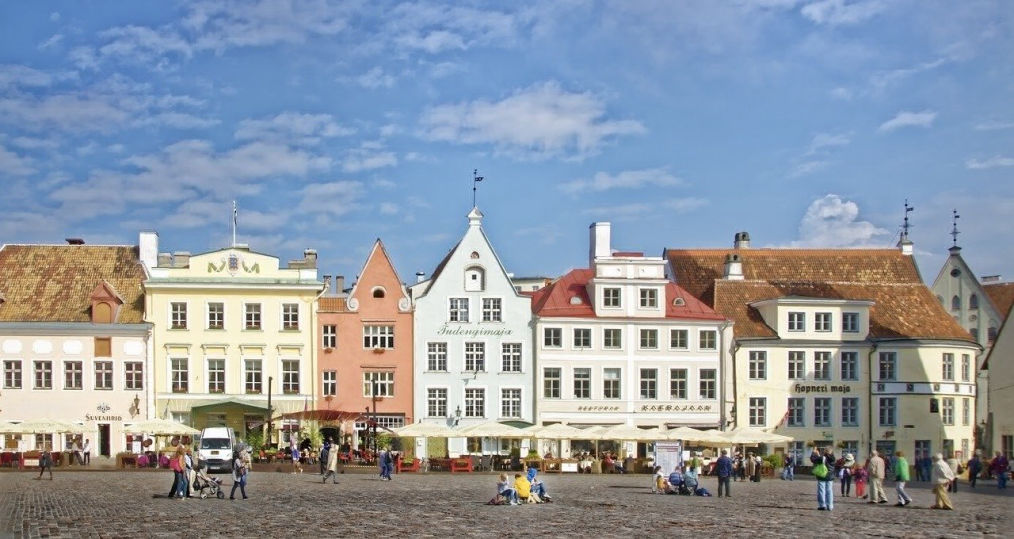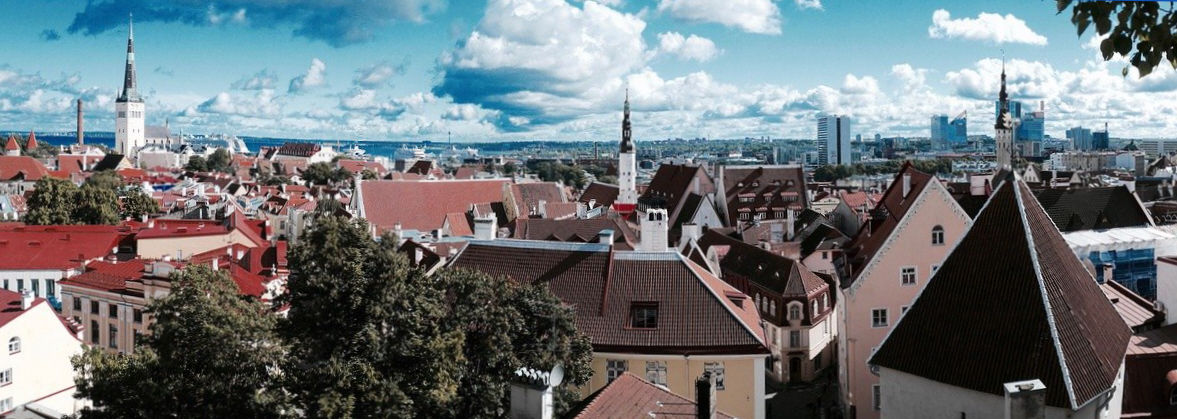
Estonia
A small country nestled on the eastern shores of the Baltic Sea.

A small country nestled on the eastern shores of the Baltic Sea.
What do you know about the country of Estonia, the homeland of most of the Walnut passengers?
Estonia is a tiny, mostly flat country located on the eastern shores of the Baltic Sea, on the southern coast of the Gulf of Finland. With a land mass of 45,228 km2, it is the northernmost country of the three Baltic states of Estonia, Latvia, and Lithuania. The country includes 2,222 islands and islets. Twenty-two percent of the country is made up of swamps and bogs.
Estonia’s capital is Tallinn, which originally meant “City of the Danes”. It dates back to the 13th century when a castle was built there by the crusading knights of the Teutonic Order. It then developed as a major centre of the Hanseatic League. It is the best-preserved medieval city in Northern Europe. The historic center (Old Town) of Tallinn is a UNESCO World Heritage site based on it being an exceptionally complete and well-preserved example of a medieval northern European trading city. The country’s capital is home to one third of Estonia’s total population of about 1.35 million people.
Unless otherwise noted as below, all images courtesy of Pixabay.com
* Photographs © Alexander Kozik - used with permission. Source: http://atgc.org/PhotoAlbum/estonia_2006/
** Photographs in public domain via U.S. Central Intelligence Agency
The Country
Although the smallest of the Baltic states, Estonia is currently being described by tourism companies as no longer being Europe's best-kept secret. The capital Tallinn has become a popular cruise ship destination and is being included in most northern Europe cruise itineraries. Tourists admire the old medieval portion of the city with it's 14th-century buildings and cobbled streets.
The country has been ruled for many centuries by the Danish, Swedes, Germans and Russians. It has been attacked, devastated, and pillaged on numerous occasions throughout history. The country was forcibly incorporated into the USSR in 1940 and it regained its freedom in 1991.
The climate can be described as maritime, wet, with moderate winters and cool summers. The terrain is marshy lowlands - flat in the north, hilly in the south. The highest elevationis at Suur Munamägi - 318 m. Offshore lie more than 1,500 islands - Saaremaa being the largest. The country is divided into 15 counties including: Harjumaa, Hiiumaa, Ida-Virumaa, Järvamaa, Jõgevamaa, Läänemaa, Lääne-Virumaa, Pärnumaa, Põlvamaa, Raplamaa, Saaremaa, Tartumaa, Valgamaa, Viljandimaa and Võrumaa. A visitor will find old manor houses, iconic windmills, quaint country villages, lovely seaside towns, spa resorts, medieval ruins and an abundance of forests and marshlands.
Note 1: A Town Hall on the central square of Tallinn was first built at the beginning of the 13th century; the current structure is a reconstructed version dating to 1404. The building functioned as the city's administrative center for some 500 years; today it serves as a reception hall for visiting dignitaries and as a tourist destination site.
Source: U.S. Central Intelligence Agency Library World Fact Book
Note 1: Võru is a county in Southern Estonia bordered by Valga and Põlva County and is the only Estonian county bordering two countries - Latvia in the south and Russian Federation in the east.
Note 2: The Pühtitsa Dormition Convent (Kuremäe Convent) was established in 1891, and is the only functioning Russian Orthodox nunnery in Estonia.
Note 3: Every day bells ring out from the tower of Tartu Town Hall. The square is the trapeze-shaped central square of Tartu, surrounded by classical buildings. The current town hall is the third building that has been erected to that spot. In the 18th century, the square was the location of the most important market in the city.
Note 4: The Cathedral of Saint Mary in the upper town of Tallinn is also known as the Dome Church; it is the oldest church in the city dating to ca. 1219. Here you will find gravestones from the 13th-18th centuries and coat of arms epitaphs dating from the 17th-20th centuries.
The church has a 69-metre Baroque bell tower from which you can get an excellent view of the city.
Note 5: Gustav Ernesaks (1908-1993) was an Estonian composer and choir leader who wrote himself into the history pages with his songs. 'Mu isamaa on minu arm' which became the unofficial anthem of Estonians during the Soviet era. Ernesaks was also one of the driving forces behind the national song festival - as well as its general manager.
This monument is located at Tallinn's Song Festival Grounds and was unveiled in 2004.
Note 6: The sculpture and fountain of The Kissing Students is one of the most recognised symbols of Tartu. A fountain has stood in this exact location since 1948. Newlyweds and their guests would visit it for luck, and people would also take a dip in the water. The sculpture was created by Mati Karmin and completed in 1998.
Note 7: In the seventh decade of the 13th century, the Danes established a castle as a residence for the Danish King’s vice-Regent. The Narva Castle is the most diverse and best preserved defence structure in Estonia. The area of the castle is 3.2 hectares, and the highest point is the Tall Hermann Tower (51 metres).
Note 8: Along the windy seaside in areas lacking in rivers, post windmills ground grain for many generations. The entire body of the mill revolved atop a post. They had parallels to a very ancient farm mill tradition in Scandinavia and southern Finland.
Recent History
As a result of the Molotov-Ribbentrop Pact of 1939, Nazi Germany gave control of Estonia, Latvia and Lithuania to the Soviet Union.
During World War II, between 1939 and 1945, through both the Nazi and Soviet occupations, Estonia 's direct human losses reached 180,000 residents, which amounted to 17% of its total population. During the Nazi occupation from 1941 to 1944, 7,800 citizens of the Republic of Estonia (70% ethnic Estonians, 15% ethnic Russians, 12.8% Estonian Jews, and 2.2% representing other nationalities) were executed in Nazi prison camps.
In the late 1980s, looser controls on freedom of expression under Soviet leader Mikhail Gorbachev reignited the Estonians' call forself-determination. By 1988, hundreds of thousands of people were gathering across Estonia to sing previously banned national songs in what became known as the "Singing Revolution."
Source: US Department of State-Estonia
Why did the passengers of the Walnut flee from their Homeland?
[In 1944] Thousands of civilians left the country with the retreating German troops or in boats over the stormy sea. Nearly 70,000 Estonians managed to reach the West; how many lives were claimed by the sea is not known. By the end of the Second World War, every tenth Estonian lived abroad. Large and vigorous Estonian colonies formed in Sweden, Canada and the USA.
Before the Russian troops arrived, tens of thousands of refugees left Estonia. They formed exile Estonian communities and tried to maintain their cultural identity and language for all the years when their homeland was occupied by the Soviet Union.
Estonia lost altogether a whole quarter of its population in the war, i.e. 282,000people — either dead, fled abroad or deported. Thirty thousand men were killed inaction. Estonia also lost all its minorities: the Baltic Germans left forGermany in 1939–1940, the coastal Swedes went to Sweden in 1943–1944 ,the Jews were exterminated, and the districts with a Russian majority across the Narva River, in Pechory (Petseri) and in Ivangorod (total 2334sq km, 56,000 inhabitants) were incorporated into Russia in late 1944. This action violated even the existing laws of the Soviet Union. In early 1945, the population of Estonia was no more than 800,000, of whom 97–98 percent were Estonians.
By late autumn 1944, the entire Estonian territory had again been occupied bythe Red Army. Although the Western countries did not recognize the annexation of the Baltic states de jure, they were not prepared to take action, being unwilling to confront the Soviet Union. Estonia, Latvia and Lithuania were the only countries whose independence was not restored at the end of the war, not even in the form of the so called people’s democracies of the Soviet Union’s Central and East European satellite states.
The annexation immediately resulted in another wave of Red Terror: arrests, executions, deportations and other brutal violations of human rights. This time the main pretext for persecution was service in the German army or in local government during the German occupation period. Between 1945 and 1959, 75,000 people suffered repressive measures, 19,000 of them were executed or perished. All Germans and sectarians were deported from Estonia; a whole generation was deprived of the opportunity to lead a normal life, even by Soviet standards. The key positions in local administrative systems were given to Russians and Russian Estonians.
Source: Estonia.org

Want to learn more? See why you should go and visit Estonia.